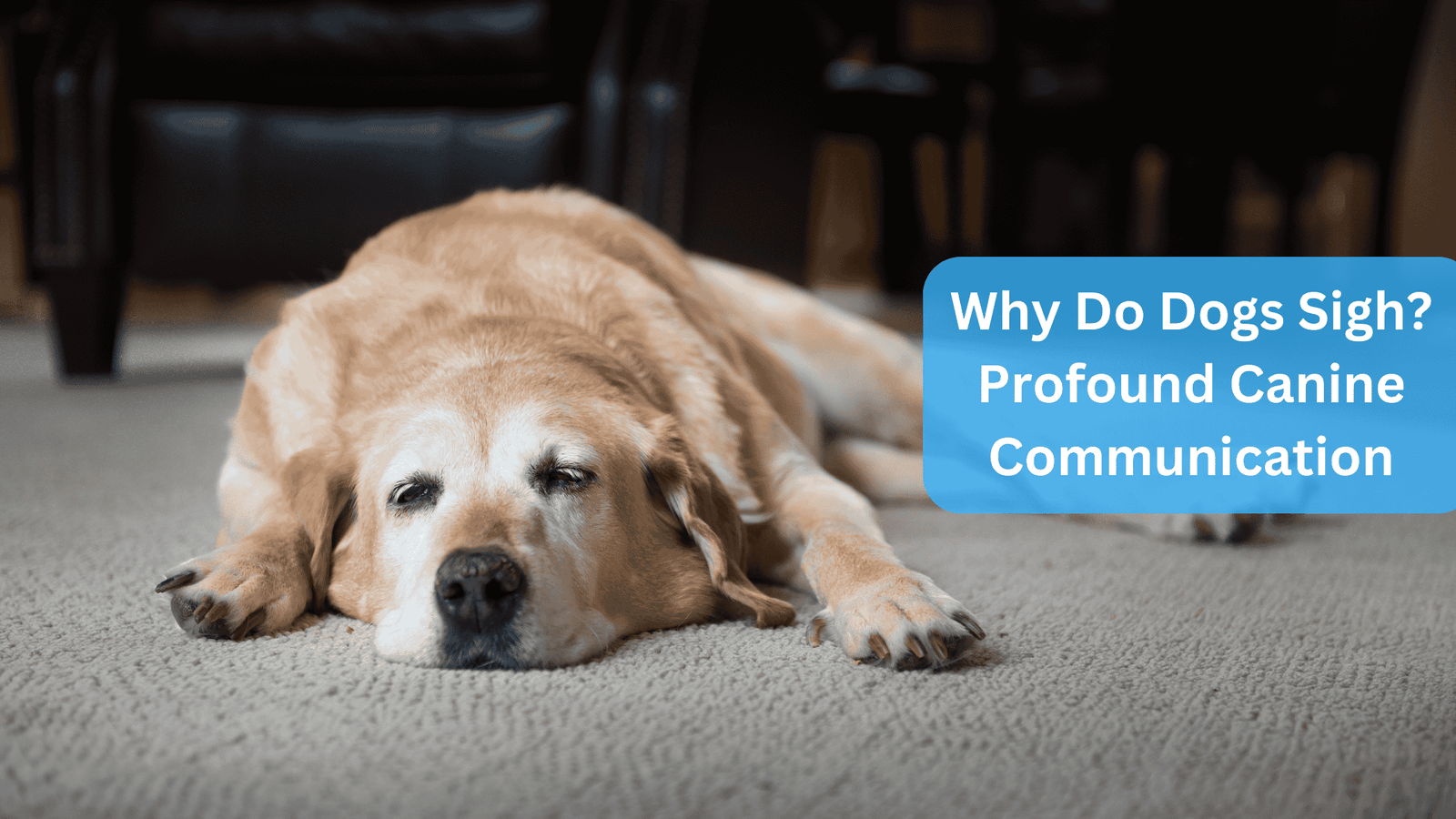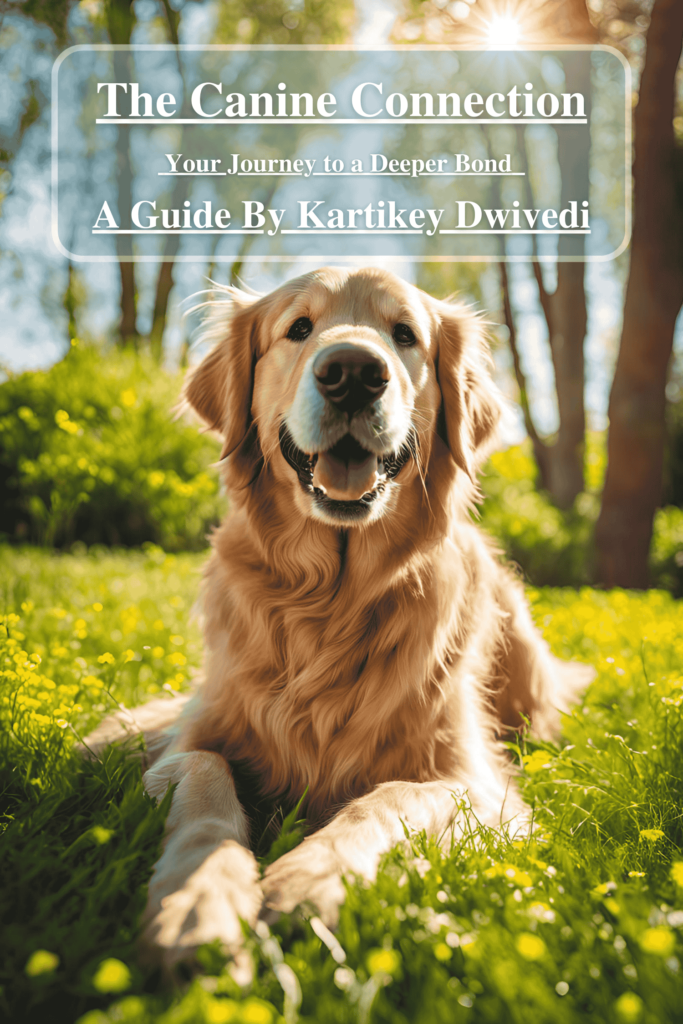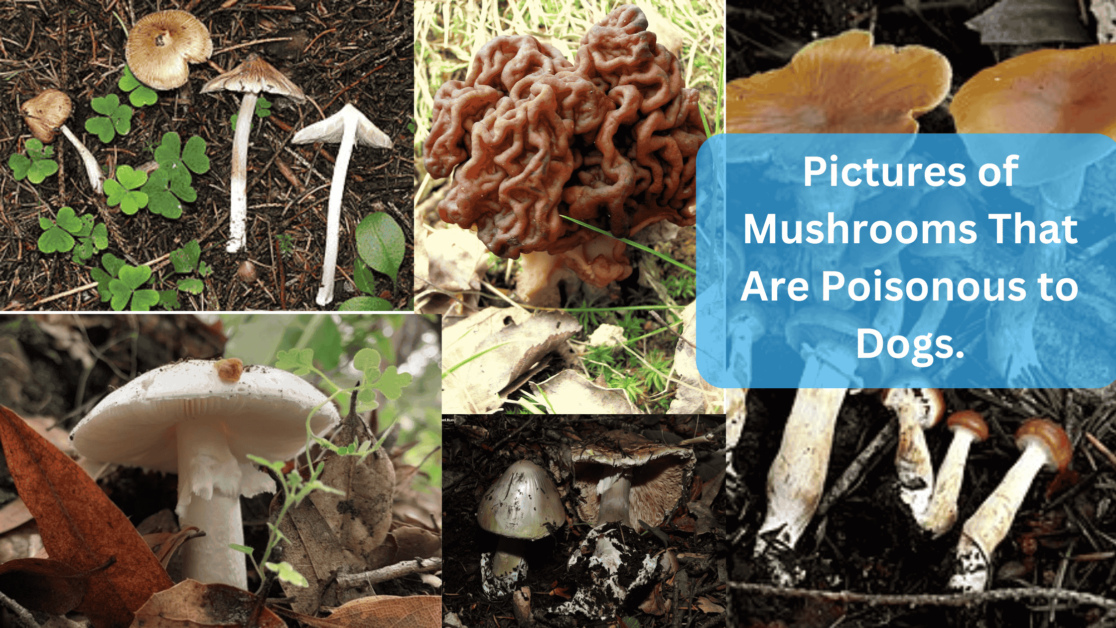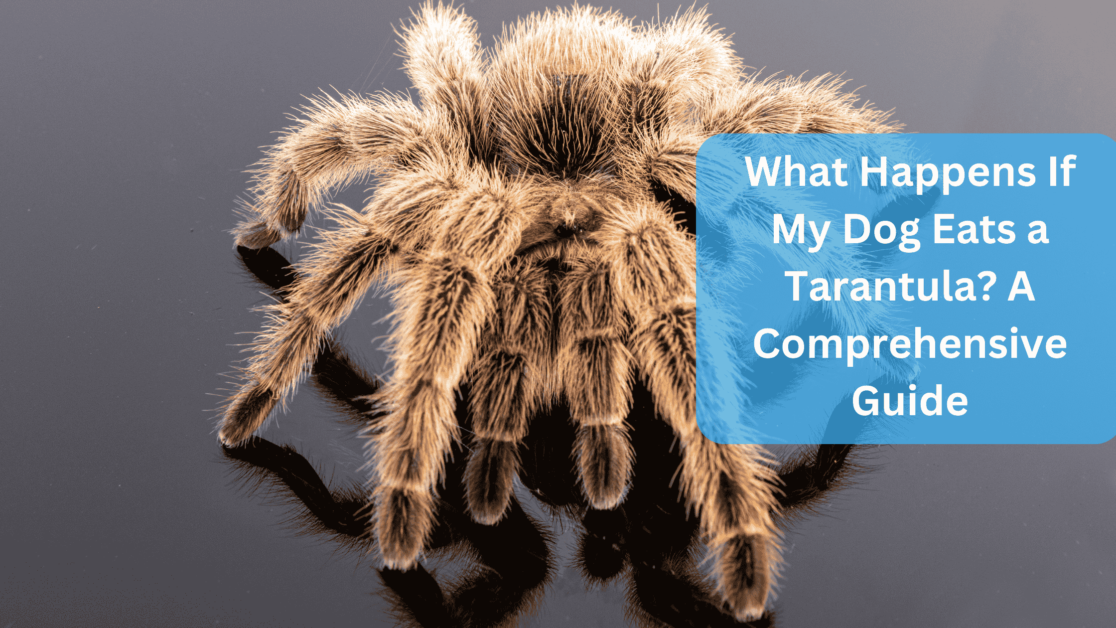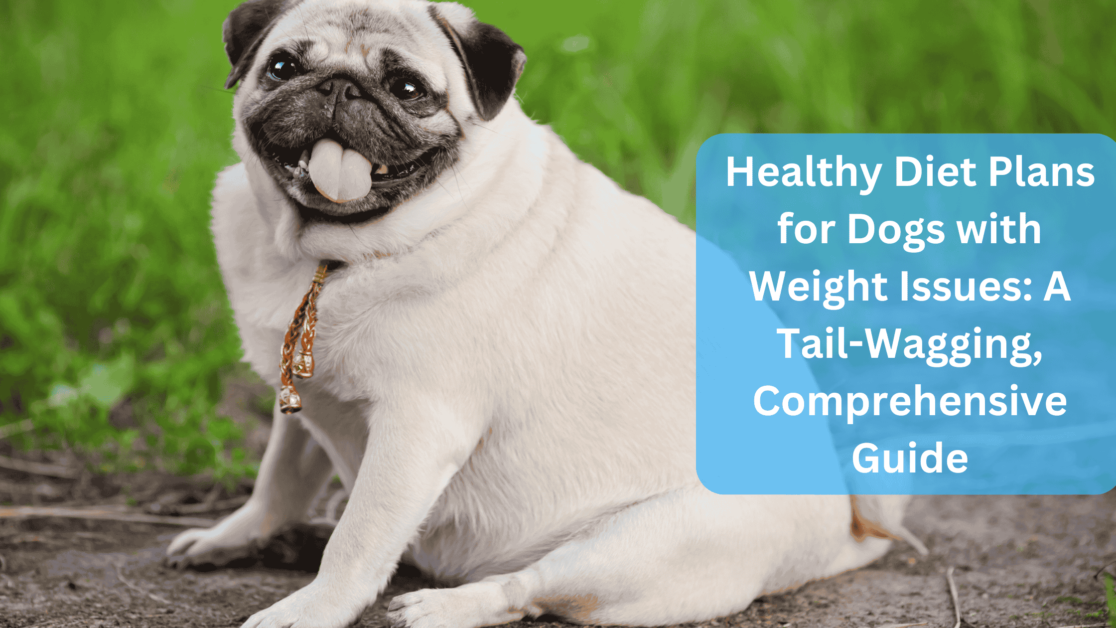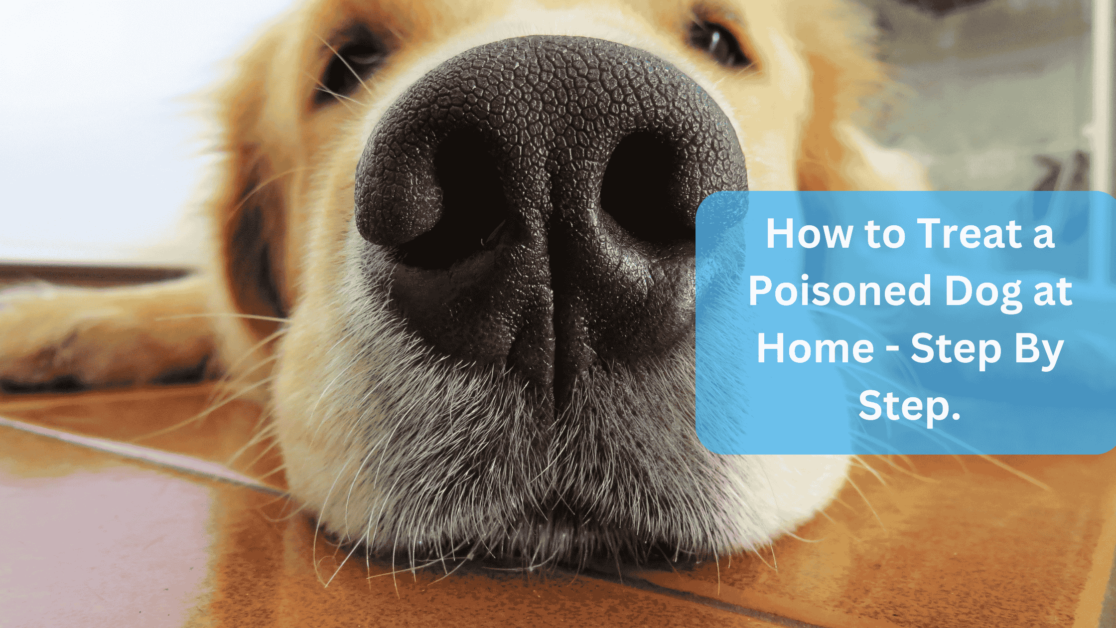Why Do Dogs Sigh? Dogs are amazing creatures, known for their charming personalities and expressive behaviors. One of the more intriguing sounds they make is a sigh. While it might seem innocent enough, sighing can convey a world of emotions in the canine realm. If you’ve ever caught your dog letting out a big sigh while sprawled out on the living room rug, you might have wondered, “What’s going on in that furry head?”
Let’s dive deep into the reasons why dogs sigh, explore the different contexts of this behavior, and shed some light on what these sighs really mean. Grab a treat for your pup, and let’s get started!
What Does It Mean When a Dog Sighs?
When a dog sighs, it can mean a variety of things depending on the context. Dogs sigh as a way to communicate their feelings, much like how we express ourselves through words and body language. Here are several interpretations of a dog’s sigh:
- Relaxation: A soft, gentle sigh can indicate that your dog is comfortable and relaxed. It’s their way of saying, “Ahh, this feels great!” After all, who doesn’t let out a contented sigh after a long day?
- Frustration: On the other hand, a loud sigh or a huff might signal annoyance or frustration. Perhaps they wanted to go for a walk, but you’re busy, or they’ve been waiting for dinner a little too long (who can blame them, right?).
- Disappointment: If your pup was excited about a game of fetch but you’ve decided to call it quits, that dramatic sigh might express their disappointment and longing for more playtime.
- Sadness or Loneliness: Dogs are social animals, and they thrive on companionship. A sigh might also reflect feelings of loneliness—perhaps your furry friend is missing you when you’re away.
Understanding the Various Sighs
Just as humans have different ways of sighing, dogs do too! Here’s a quick breakdown of how you might interpret different types of sighs:
- Contented Sigh: A soft, long sigh often follows a cozy cuddle or a well-deserved nap. It indicates happiness and comfort.
- Annoyed Huff: A quick, loud huff might happen when they’re impatient or irritated—think of it as their version of an eye roll.
- Deep Sigh: This one often carries weight, akin to a tired sigh after a long day, reflecting exhaustion or relief when settling down.
Fun Fact:
Did you know that dogs can’t sweat like humans? They cool down by panting and through their paws. 🐾💦 So, when they plop down after a game of fetch, that sigh might just be a part of their cooling-off routine!
Why Do Dogs Sigh When They Lay Down?
You might have noticed that your dog often gives a hefty sigh when they lay down. This behavior can be particularly endearing (and sometimes a little dramatic!). Here’s what it usually signifies:
- Transition to Relaxation: When dogs lay down, they often let out a sigh as part of their transition from an active state to a relaxed one. It’s their way of signaling to themselves (and you!) that it’s time to chill out!
- Relief: Laying down can relieve pressure off their paws and joints, especially for older dogs or those with arthritis. That sigh upon settling down can also indicate relief after a long day of play or exercise. Imagine finally dropping your bags after a long day at work—it’s similar!
Additionally, Consider This:
If your dog seems to sigh heavily every time they lay down, it might be worth observing their behavior to ensure they are comfortable and not in pain, especially as they age. Look for signs of discomfort, such as difficulty getting up or avoiding certain positions.
Why Do Dogs Sigh So Much?
If you’ve ever wondered why your dog seems to sigh excessively, there might be several reasons behind those frequent sighs:
- Communication: Dogs are vocal animals, and sighing is just another way they communicate with their humans. It’s like your dog’s way of talking to you—albeit a little less direct than barking!
- Boredom or Frustration: If your dog sighs frequently, they might be feeling bored or frustrated. Make sure they have enough mental and physical stimulation throughout the day! A tired dog is a happy dog, right?
- Health Issues: Sometimes, excessive sighing may indicate discomfort or health issues. If you notice changes in your dog’s behavior, appetite, or if the sighing seems unusual, it’s best to consult a veterinarian.
Quick Tip:
Keep your dog’s schedule varied! Engaging in different activities like puzzles, training sessions, or fun outings can help keep boredom at bay. Remember, a well-stimulated dog is less likely to sigh out of boredom.
Why Do Dogs Sigh Loudly?
A loud sigh from your dog can be a bit startling, especially when it comes out of nowhere! Here’s what those loud sighs might mean:
- Expressing Displeasure: A loud sigh could indicate that your dog is displeased with something—maybe they wanted to go out for a walk and you’re not responding quickly enough. It’s their dramatic way of saying, “Well, this is just great!”
- Attention-Seeking: Sometimes, dogs will let out a loud sigh to get your attention. They might want you to acknowledge them, give them a scratch, or play with them. Think of it as their canine version of saying, “Excuse me, human!”
What to Watch For:
If your dog is sighing loudly but seems agitated or restless, take a moment to assess their needs. They might be bored, anxious, or simply craving attention!
The Dramatic Sigh:
Dogs can be quite theatrical. Imagine your dog letting out a loud sigh, giving you the side-eye, and then turning away as if to say, “Fine, I’ll just suffer in silence!” It’s all in good fun, and cute drama is just part of their charm!
Why Do Dogs Sigh When You Pet Them?
Have you noticed your dog sighing when you pet them? This behavior can be particularly sweet. Here’s what it typically means:
- Contentment: When your dog gives a sigh while you’re petting them, it’s often a sign of pure bliss. It means they’re really enjoying your attention and affection. It’s like their subtle way of saying, “Ahh, yes, right there!”
- Relaxation Response: As you stroke their fur and they feel safe and loved, their bodies relax, leading to that soft sigh of contentment.
More on Canine Relaxation:
If your dog sighs heavily as you pet them, they might be telling you how much they appreciate the moment. Dogs are masters of nonverbal communication, and a well-timed sigh can convey a lot of emotion!
A Little Extra:
If your dog starts to lean into you while sighing, they’re soaking up the love—so don’t hold back! It’s the canine version of a cozy hug, and it’s clear they think you’re the best.
Why Do Dogs Deep Sigh?
A deep sigh is different from a regular sigh and can carry its own meaning. Here’s what to look for:
- Sign of Stress Relief: A deep sigh often indicates relief after a tense moment. If your dog was anxious or overstimulated, that deep sigh can signify a release of built-up tension. It’s as if they are letting go of all their worries—just like humans do!
- Sign of Aging: Older dogs might exhibit deeper sighs as their bodies tire more easily. Their joints might ache, or they might simply be expressing the weariness that comes with age.
Fun Reflection:
Think of your dog as your older friend who’s seen it all. They may be tired and ready to settle down for a quiet evening, and that deep sigh is just them saying, “I’ve had enough excitement for today!”
Helpful Insight:
If your older dog seems to sigh frequently and appears uncomfortable, consider adjusting their sleeping area to provide better support, or consult your veterinarian for potential remedies.
Why Do Dogs Huff and Sigh?
You might hear your dog make a combination of huffing and sighing sounds. This vocalization can happen for various reasons:
- Excitement and Anticipation: A huff followed by a sigh might occur when your dog is excited about something—like a walk or a treat—then realizes they need to wait a bit longer. It’s their way of expressing enthusiasm and impatience at the same time!
- Displeasure: If a dog huffs and sighs, they could be expressing their displeasure or impatience. “Why do I have to wait for my dinner?!” 🐕⏳
Keep an Ear Out:
If your dog huffs and sighs regularly, take note of the circumstances. Are they waiting for something? Wanting attention? Understanding what sparks these sounds can help meet their needs more effectively.
Fun Example:
Picture this: your dog is sitting by the treat cupboard, huffing and sighing, looking at you with those big puppy eyes. It’s a one-dog performance demanding snacks—who could resist that?
Why Do Dogs Sigh Before Sleeping?
Dogs often exhibit a specific behavior when they are winding down for sleep that includes sighing. Here’s why:
- Transitioning to Sleep: As dogs prepare to sleep, they may sigh to signal the transition from wakefulness to rest. It’s their soothing way of settling down for the night.
- Comfort: A sigh might also indicate that they are comfortable and ready for a nice, peaceful sleep. Think of it as their bedtime ritual!
Cozy Sleep Tips:
Ensure your dog’s sleeping area is comfortable and inviting! A soft bed, a favorite blanket, and maybe even a little night light can help signal that it’s time to wind down.
Sweet Dreams:
Humans often have bedtime routines, and so do dogs! A sigh before settling in can be their way of saying, “Okay, I’m ready for dreamland!”
Why Do Dogs Sigh When Lying Down?
You might notice that your dog sighs specifically when they lie down. This behavior can mean a few things:
- Relief: Just like humans, dogs can feel relief when they finally take the weight off their feet. The sigh is an expression of comfort as they settle into a relaxed position after a long day.
- Satisfaction: When a dog lies down after a long day of play, a sigh can express satisfaction, signifying they’ve had a fulfilling day and are ready to unwind.
Pay Attention:
If your dog seems to sigh heavily every time they lie down, it might be worth observing their behavior to ensure they are comfortable and not in pain, especially as they age. Look for signs of discomfort, such as difficulty getting up or avoiding certain positions.
Comfy Spots:
Consider creating cozy resting spots around your home. Dogs love soft beds, but they also enjoy being near their favorite humans. A well-placed dog bed in the living room can lead to many contented sighs.
Why Do Dogs Sigh at You?
If your dog gives you a dramatic sigh while looking directly at you, it can be quite funny and confusing. But why do they do this?
- Attention-Seeking Behavior: When dogs sigh at you, they may be trying to get your attention. They want you to notice them and perhaps respond with some affection or a treat.
- Emotional Connection: A sigh directed at you can also signify a bond. Dogs are social animals, and they’re letting you know they want to be included in whatever is happening.
A Little Humor:
It’s as if your dog is saying, “Hey, human! I’m over here, waiting for you to acknowledge my majestic presence!” 🐶✨
Engaging Your Dog:
If your dog sighs at you, consider giving them some love. Maybe a gentle scratch behind the ears or a game of fetch will do the trick!
Common Myths about Dog Sighing
There are plenty of misconceptions about why dogs sigh. Here are a few myths debunked:
- Myth: Dogs only sigh when they are unhappy.
Fact: Dogs sigh for various reasons, including contentment, relaxation, and even excitement. It’s not solely a sign of unhappiness! - Myth: Sighing indicates a health problem.
Fact: While excessive sighing can sometimes be a sign of discomfort, many dogs sigh simply as a part of their normal communication and behavior! - Myth: A sigh during play means they want to stop.
Fact: Many dogs sigh during play out of joy or excitement! It’s similar to a human exclaiming, “This is so much fun!”
A Final Thought on Myths:
A dog’s sigh can tell you many things, but it’s essential to consider the whole picture—context matters! Just because your dog is sighing doesn’t mean they’re upset or unwell.
How to Respond to Your Dog’s Sighs
Understanding why dogs sigh is crucial, but knowing how to respond is equally important. Here are some tips:
- Observe Context: Pay attention to the context of the sigh. Is your dog lying down, being petted, or seemingly bored? Understanding the situation can help you gauge their needs.
- Provide Comfort: If your dog seems to be expressing discomfort or stress, provide them with comfort—whether that’s a cozy blanket, a favorite toy, or some extra affection.
- Engage in Play: If your dog is sighing out of boredom, consider engaging them in play or providing new toys to keep them entertained!
Pro Tip:
Check for any signs of distress or discomfort. If you notice significant changes in your dog’s behavior, it might be a good idea to consult your veterinarian.
Final Reflection:
Listening to your dog and responding to their needs not only strengthens your bond but also creates a happier, healthier environment for both of you.
Also Read: Why Do Dogs Lick Their Paws? A Comprehensive Guide
Also Read: Why Does My Dog Pee on My Bed? A Comprehensive Guide.
Also Read: Why Is My Dog Licking the Floor?
Conclusion
Understanding the reasons behind your dog’s sighs offers valuable insight into their emotional state and overall well-being. Sighing is a natural part of canine communication and can indicate relaxation, contentment, frustration, or even stress.
By paying attention to the context and your dog’s body language, you can foster a deeper bond with your furry friend and ensure that they feel loved and understood.
So, the next time you hear your dog let out a big sigh, take a moment to think about what they might be expressing. After all, they may just be saying, “Ahh, life is good!” or “Why are we waiting for dinner?!” Either way, those sighs are simply one more way our dogs communicate with us, sharing their joys, frustrations, and everything in between.
Sources:
- https://www.petmd.com/dog/behavior/why-do-dogs-sigh
- https://www.akc.org/expert-advice/lifestyle/how-the-sounds-dogs-make-reveal-their-emotions/
